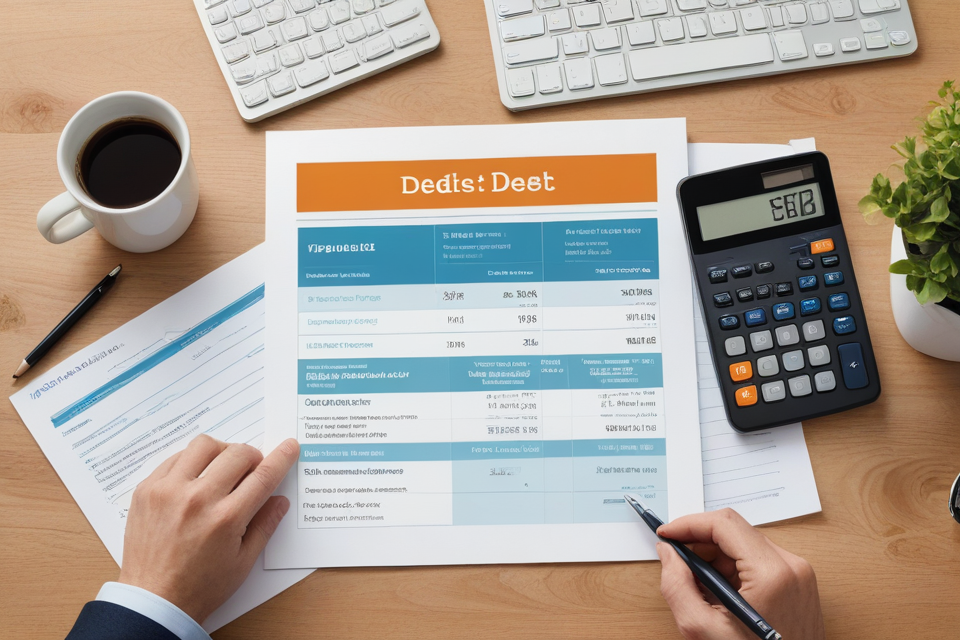Debt can be a significant barrier to financial freedom and stability. Whether it’s credit card debt, personal loans, or student loans, finding effective ways to reduce debt quickly is crucial for regaining control of your finances. In this blog, we’ll explore actionable strategies to help you tackle and reduce your debt efficiently, paving the way to a more secure financial future.
1. Create a Detailed Budget
1.1. Track Your Spending
- What It Is: Monitoring your daily, weekly, and monthly expenses to understand where your money goes.
- Why It’s Important: Helps identify areas where you can cut back and allocate more funds toward debt repayment.
- How to Do It: Use budgeting apps or spreadsheets to categorize and track your expenses. Look for patterns and areas where you can reduce spending.
1.2. Set a Budget for Debt Repayment
- What It Is: Allocating a specific portion of your income towards debt each month.
- Why It’s Important: Ensures consistent progress in paying off your debt.
- How to Do It: Include debt repayment as a fixed expense in your budget. Prioritize debt repayment alongside essential expenses and savings.
2. Prioritize Your Debts
2.1. Use the Debt Snowball Method
- What It Is: Paying off your smallest debt first while making minimum payments on larger debts.
- Why It’s Important: Provides psychological motivation by eliminating smaller debts quickly.
- How to Do It: List your debts from smallest to largest. Focus on paying off the smallest debt first while continuing to make minimum payments on others. Once the smallest debt is paid off, move to the next one.
2.2. Use the Debt Avalanche Method
- What It Is: Paying off debts with the highest interest rates first while making minimum payments on others.
- Why It’s Important: Reduces the total amount of interest paid over time.
- How to Do It: List your debts by interest rate, from highest to lowest. Focus on paying off the debt with the highest interest rate first while making minimum payments on others. Once the highest interest debt is paid off, move to the next one.
3. Reduce Interest Rates
3.1. Negotiate Lower Interest Rates
- What It Is: Contacting your creditors to request a reduction in your interest rates.
- Why It’s Important: Lowers your overall debt repayment costs and accelerates debt reduction.
- How to Do It: Call your credit card companies or lenders and explain your situation. Request a lower interest rate, especially if you have a good payment history.
3.2. Transfer Balances to a Lower-Interest Credit Card
- What It Is: Moving high-interest credit card balances to a card with a lower interest rate or 0% APR for balance transfers.
- Why It’s Important: Reduces the amount of interest paid on your debt, allowing more of your payment to go toward the principal.
- How to Do It: Research credit cards offering 0% APR on balance transfers. Transfer your high-interest balances to the new card and pay off the debt within the promotional period.
4. Increase Your Income
4.1. Take on a Side Job or Freelance Work
- What It Is: Earning additional income through part-time work or freelance opportunities.
- Why It’s Important: Provides extra funds to allocate towards debt repayment.
- How to Do It: Identify skills or hobbies that can be monetized. Look for side jobs or freelance opportunities that fit your schedule and expertise.
4.2. Sell Unwanted Items
- What It Is: Generating cash by selling items you no longer need or use.
- Why It’s Important: Creates additional funds to pay down debt.
- How to Do It: Clean out your home and identify items of value. Use online marketplaces or local consignment shops to sell these items.
5. Consider Debt Consolidation
5.1. Apply for a Debt Consolidation Loan
- What It Is: Taking out a loan to pay off multiple debts, consolidating them into a single payment with a lower interest rate.
- Why It’s Important: Simplifies debt management and potentially lowers your overall interest rate.
- How to Do It: Research consolidation loan options. Compare interest rates and terms to find the best deal for your situation.
5.2. Use a Home Equity Loan or Line of Credit
- What It Is: Borrowing against the equity in your home to pay off high-interest debt.
- Why It’s Important: Typically offers lower interest rates than credit cards or personal loans.
- How to Do It: Consult with a mortgage lender to explore home equity loan or line of credit options. Ensure you understand the risks, including the possibility of losing your home if you fail to repay.
6. Seek Professional Help
6.1. Consult with a Credit Counselor
- What It Is: Meeting with a certified credit counselor for personalized advice and debt management strategies.
- Why It’s Important: Provides expert guidance and potential access to debt management programs.
- How to Do It: Find a reputable credit counseling agency. Schedule a consultation to discuss your financial situation and explore available options.
6.2. Explore Debt Management Plans (DMPs)
- What It Is: Enrolling in a structured repayment plan through a credit counseling agency.
- Why It’s Important: Consolidates payments and may reduce interest rates on your debts.
- How to Do It: Work with a credit counselor to set up a DMP. The counselor will negotiate with creditors on your behalf and create a plan for you to follow.

